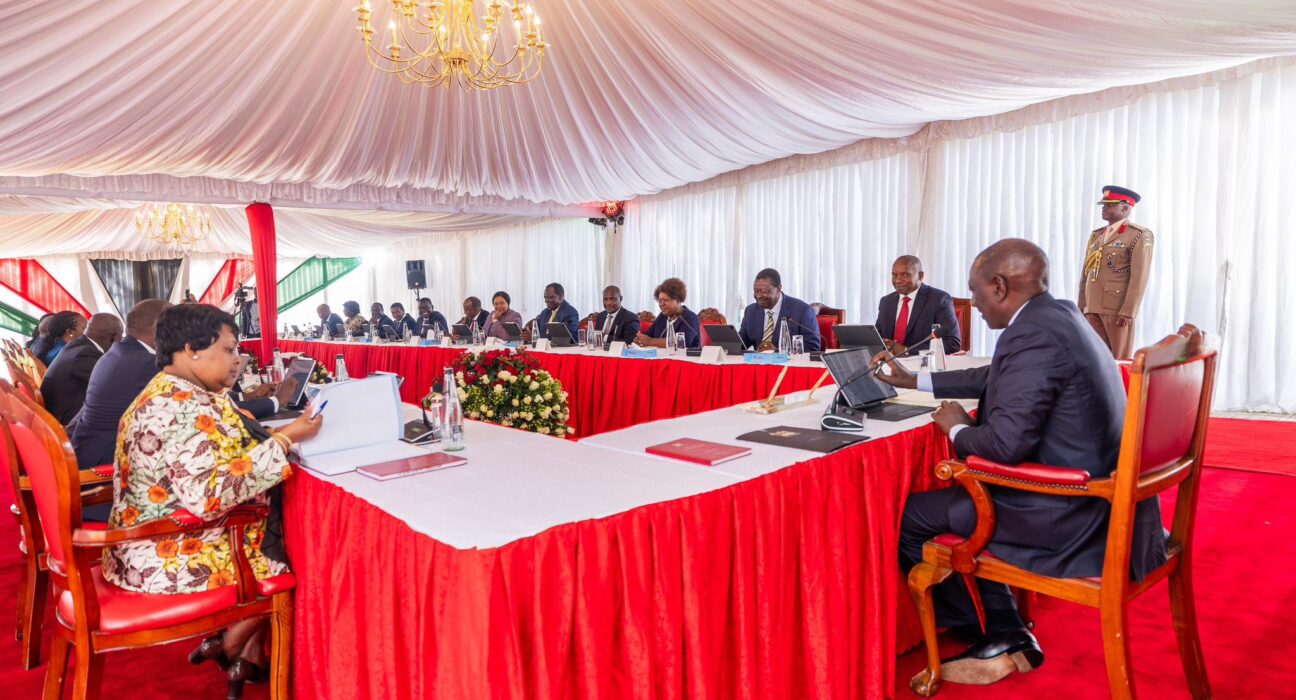President William Ruto’s administration has taken a significant step toward streamlining Kenya’s government operations by proposing the dissolution of nine state corporations. This move, announced during the first Cabinet meeting of 2025 at the State Lodge in Kakamega, aligns with the President’s vision of a leaner, more efficient government that focuses on delivering transformative change for all Kenyans.
The meeting underscored the rare and inclusive nature of the current Cabinet, which includes members from diverse political alliances such as Kenya Kwanza and Azimio coalitions. This inclusivity, President Ruto highlighted, is a historic opportunity to unite the country and drive national development.
Why Are the State Corporations Being Dissolved?
The rationale behind the decision is to eliminate duplication of roles, reduce bureaucratic inefficiencies, and reallocate functions to relevant ministries or other state corporations. By dissolving these entities, the government aims to save resources and improve service delivery.
President Ruto emphasized that the functions currently performed by these corporations can be effectively managed under existing ministries or related entities.
The Nine State Corporations Proposed for Dissolution
Here’s a closer look at the state corporations slated for dissolution:
- Kenya Tsetse Fly and Trypanosomiasis Eradication Council
- Function: Combat the spread of tsetse flies and trypanosomiasis in Kenya.
- Proposed Transfer: Functions will be integrated into the Ministry of Agriculture and Livestock Development to ensure streamlined pest control and disease management strategies.
- Kenya Fish Marketing Authority (KFMA)
- Function: Promote fish marketing and trade within Kenya and abroad.
- Proposed Transfer: Functions will move to the Ministry of Blue Economy and Maritime Affairs, which oversees fisheries and marine resource management.
- Centre for Mathematics, Science, and Technology Education in Africa (CEMASTEA)
- Function: Enhance teaching and learning in STEM subjects across Africa.
- Proposed Transfer: Responsibilities will be absorbed by the Ministry of Education.
- President’s Award – Kenya
- Function: Administer the President’s Award program to empower young people through leadership and life skills.
- Proposed Transfer: Activities will be overseen by the Ministry of Youth Affairs, Arts, and Sports.
- Nuclear Power and Energy Agency (NuPEA)
- Function: Develop Kenya’s nuclear energy potential.
- Proposed Transfer: Duties will transition to the Ministry of Energy and Petroleum, which manages all energy-related initiatives.
- Kenya National Commission for UNESCO
- Function: Coordinate Kenya’s activities with UNESCO.
- Proposed Transfer: Oversight will shift to the Ministry of Education.
- Kenya Film Classification Board (KFCB)
- Function: Regulate film content in Kenya.
- Proposed Transfer: Its mandate will be handed over to the Ministry of ICT and the Communications Authority of Kenya for better alignment with digital transformation policies.
- National Council for Nomadic Education (NACONEK)
- Function: Address education challenges among nomadic communities.
- Proposed Transfer: Tasks will be integrated into the Ministry of Education’s programs for marginalized communities.
- LAPSSET Corridor Development Authority (LCDA)
- Function: Oversee the LAPSSET corridor mega-project.
- Proposed Transfer: The project will now be managed directly by the Ministry of Transport, Roads, and Public Works to enhance accountability and efficiency.
Impact on Government Operations and Service Delivery
- Cost Savings: Reducing administrative overhead associated with maintaining these corporations will free up funds for other priority areas such as healthcare, education, and infrastructure.
- Improved Efficiency: Streamlining functions within ministries eliminates redundancies, allowing for faster decision-making and implementation of policies.
- Job Reallocations: Employees of the dissolved corporations will likely be reassigned to relevant ministries or entities, ensuring minimal disruption to livelihoods.
- Focus on Core Mandates: Ministries will have a clearer mandate, enabling them to focus on delivering specific outcomes aligned with national priorities.
Inclusive Governance as a Pillar of Transformation
President Ruto’s inclusive Cabinet, which integrates leaders from different political parties, demonstrates a commitment to national unity. By fostering collaboration across political lines, the government seeks to address pressing issues such as unemployment, economic recovery, and social cohesion.
The President emphasized that this rare bipartisan composition provides a unique platform to implement transformative policies that benefit all Kenyans.
Challenges and Concerns
While the proposed dissolution of these state corporations has been welcomed by many as a bold reform, it also raises concerns:
- Transition Period: The integration of functions into ministries may lead to temporary disruptions in service delivery.
- Oversight: There is a need for robust oversight mechanisms to ensure that the functions are effectively absorbed and implemented.
- Public Confidence: Building trust among stakeholders—employees, beneficiaries, and the public—is essential for the success of this initiative.
Kenyan professionals, policymakers, and citizens are encouraged to stay informed about these changes and actively participate in discussions shaping the nation’s future. Share your thoughts on how these reforms can be optimized to deliver the greatest impact.
For continuous updates on government policy changes and their implications for your business, subscribe to our newsletter.





